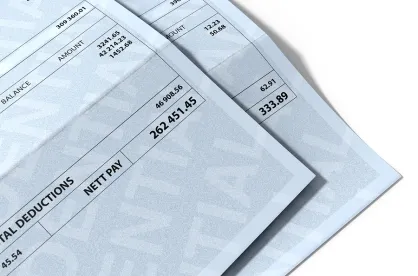Yesterday evening, the SBA posted an Interim Final Rule for the Paycheck Protection Program (“PPP”). This is not the final rule, but it provides changes to the Paycheck Protection Program and guidance for applicants and lenders.
Some of the notable updates include:
-
Eligibility
-
The Interim Rule clarifies that independent contractors are not counted as employees. Independent contractors can file separate applications under the PPP.
-
As previously noted, non-profit organization must be a non-profit organization described in section 501(c)(3) of the Internal Revenue Code or a 501(c)(19) veterans’ organization to be eligible.
-
SBA intends to issue further guidance regarding the “affiliation” rules.
-
-
Impermissible Use of PPP Funds
-
If an applicant uses PPP funds for unauthorized purposes, the SBA will direct the applicant to repay those amounts. If an applicant knowingly uses the funds for unauthorized purposes, the applicant will be subject to additional liability such as charges for fraud. If an applicant or one of its shareholders, members, or partners uses PPP funds for unauthorized purposes, the SBA will have recourse against the shareholder, member, or partner for the unauthorized use.
-
-
Loan Terms
-
Interest on the loan will be fixed at 1% (not 0.5% as previously provided by the SBA) and payments of the loans shall be deferred for no less than 6 months, however interest will continue to accrue.
-
Applicants are not required to give a personal guarantee or collateral.
-
The PPP loan maturity date is 2 years. This is a change from the initial legislation that called for the maturity to be no more than 10 years.
-
-
Loan Amount
-
Applicants may still apply for the lesser of $10 million or 2.5 times the average total monthly payroll costs incurred in the one-year period before the loan.
-
Payroll costs consist of compensation to employees (whose principal place of residence is the United States) in the form of salary, wages, commissions, or similar compensation; cash tips or the equivalent (based on employer records of past tips or, in the absence of such records, a reasonable, good-faith employer estimate of such tips); payment for vacation, parental, family, medical, or sick leave; allowance for separation or dismissal; payment for the provision of employee benefits consisting of group health care coverage, including insurance premiums, and retirement; payment of state and local taxes assessed on compensation of employees.
-
Independent contractors do not count as employees for purposes of PPP loan calculations and would have to apply for a PPP loan on their own.
-
For applicants that are independent contractors or sole proprietors, payroll costs include wage, commissions, income, or net earnings from self-employment or similar compensation.
-
The SBA Interim Rule has made it clear when determining payroll costs the following amounts are excluded: (i) any amounts paid to any employee over $100,000; (ii) payments to non-U.S. residents; (iii) for the period February 15, 2020 to June 30, 2020, all Federal employment taxes imposed including the employee and employer share of FICA and Railroad Retirement Act taxes, and income taxes required to be withheld from employees; and (iv) qualified sick and family leave wages for which is a credit is allowed under the Families First Coronavirus Response Act.
-
Also, when calculating your maximum loan amount add, if any, the outstanding amount of an Economic Injury Disaster Loan (EIDL) made between January 31, 2020 and April 3, 2020, less the amount of any “advance” under an EIDL COVID-19 loan (because it does not have to be repaid).
-
-
Loan Forgiveness
-
The amount of loan forgiveness is based on the business retaining or rehiring employees and maintaining salary levels.
-
At least 75% of the PPP loan must be used towards payroll costs to be forgiven. For purposes of determining the percentage of use of proceeds for payroll costs, the amount of any EIDL loan refinanced will be included.
-
No more than 25% of the loan forgiveness amount may be attributable to non-payroll costs, which includes (i) interest on mortgages incurred before February 15, 2020; (ii) rent in force before February 15, 2020; (iii) utility payments for services which began before February 15, 2020; (iv) interest on any other debt obligations incurred before February 15, 2020; and (v) refinancing a EIDL loan made between January 31, 2020 and April 3, 2020.
-
Employers with tipped employees (as described in the Fair Labor Standards Act) may receive forgiveness for additional wages paid to those employees.
-
SBA will issue more guidance regarding loan forgiveness procedures in the future.
-
-
How to Apply
-
You can apply through any existing SBA 7(a) lender or through any federally insured depository institution, federally insured credit union, and Farm Credit System institution that is participating. Other regulated lenders will be available to make these loans once they are approved and enrolled in the program.
-
Lenders may begin processing loan applications as soon as April 3, 2020, for small businesses and sole proprietorships.
-
Starting April 10, 2020 independent contractors and self-employed individuals can apply.
-
-
Application Form and Certifications
-
The applicant must submit SBA Form 2483 (Paycheck Protection Program Application Form) and such documentation as is necessary to establish eligibility, such as payroll processor records, payroll tax filings, or Form 1099-MISC, or income and expenses from a sole proprietorship. For applicants that do not have any such documentation, the applicant must provide other supporting documentation, such as bank records, sufficient to demonstrate the qualifying payroll amount.
-
You can CLICK HERE to find our previous post summarizing the CARES Act and the Paycheck Protection Program.
Applications for the Paycheck Protection Program open today, April 3, 2020, and can be found through THIS LINK.
We are encouraging all clients affected by the COVID-19 crisis to take advantage of the Paycheck Protection Program and quickly, as the funds are first come, first served.




 />i
/>i

